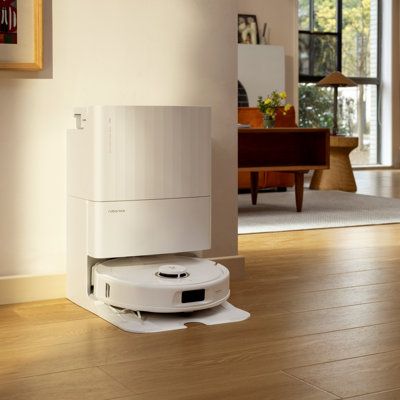Good news: You have a lot of them. The challenge is figuring out which of the major retirement plans is best for you.
It used to be that only a few venturesome entrepreneurs would launch businesses on their own. The gig economy has changed that, with everyone from bloggers to Uber drivers to freelancers being seen as self-employed owners of their own independent businesses.
Being self-employed has its obvious perks, but it also means that you are responsible for protecting yourself financially. Unlike employees with access to 401(k) plans, it’s up to you if you want to set money aside for retirement and your golden years.
If you’re working as your own boss, there are plenty of retirement paths to explore. The most common retirement accounts for freelancers and those that are self-employed are SEP IRAs, Simple IRAs, and Individual 401(k)s. Similar to retirement accounts offered by employers, these retirement plans have two factors in common: up-front tax breaks and tax-deferred saving, meaning you don’t pay taxes until you withdraw the money years later in retirement (the Roth version of the individual 401(k) is slightly different.)
The various tax-sheltered plans vary in terms of when and how much you’ll be taxed, as well as the maximum annual contributions you can make. So, which one is right for you depends on how much you can save and whether or not you have employees. If you’re looking to set one up, your first step should be to consider how much you can afford to save without compromising your lifestyle – and how much you’ll need during retirement.
This can all get pretty confusing, especially when combined with owning a small business or being a freelancer. That’s why we’re breaking it down right here.
5 smart options you can consider to ensure you’ll have retirement savings available for your golden years.
What a Traditional IRA and How Does It Work?
The first option we’re going to review is a traditional IRA. With these, you contribute pre-tax earnings into your account and don’t have to worry about giving Uncle Sam a single penny until you withdraw that money down the line. Actually, Uncle Sam is the one giving you money here — at least temporarily. Since you aren’t covered by a retirement plan through work, your annual contributions to a traditional IRA may be completely tax deductible. This reduces your tax liability for the year, potentially leaving more money for you to invest toward your retirement.
So the potential drawback of a traditional IRA? You could end up paying more in taxes when you do eventually withdraw your money if you’ve moved into a higher income bracket or if the government has raised tax rates by that time.
Sign up for a Traditional IRA here.
What’s a Roth IRA and How Does It Work?
The second option is a Roth IRA. This type of retirement account treats taxes differently than a traditional IRA. With a Roth, you pay taxes on whatever you contribute from the start. So you don’t reduce your tax liability for the year, but you also don’t ever have to pay taxes on that money again. The good part? Whatever is in your account when you retire is all yours.
However, unlike traditional IRAs, Roth IRAs come with income requirement. If you fall within these income requirements, can afford to pay taxes on the outset, and/or anticipate that your tax rate will be higher down the line (because you expect to make more money), a Roth IRA could be a great option for you. But since we have no way of knowing what tax rates will look like in the future, having retirement accounts that treat taxes differently (e.g., both a traditional and Roth IRA) isn’t a bad thing.
With a Roth IRA, you can contribute a combined maximum of $5,500 per year — or $6,500 if you’re 50 years old or older — to all of your traditional and Roth IRAs. Now for your monthly rate calculations: $5,500 divided by 12 is $458.33. That’s how much you should factor into your monthly rate if you decide to go either the traditional or Roth IRA route. If you’re 50 or older, your retirement savings target is $542.
What’s the Difference Between a Roth IRA and a Traditional IRA?
In short, Traditional and Roth IRAs are both tax-advantaged accounts designed to help you save for retirement, but there are a few differences between them.
In a traditional IRA, all earnings grow tax-free, and contributions may be tax deductible depending on your financial situation. Withdrawals from the account in retirement are typically taxed as income, and withdrawals before 59½ are subject to a 10% penalty from the IRS.
In a Roth IRA, the earnings also grow tax-free, but contributions are not eligible for a tax deduction. Unlike a Traditional IRA, when you withdraw from a Roth IRA in retirement, the distributions are (usually) tax-free. Contributions to a Roth IRA can be withdrawn without penalty at any time. Roth IRA investment earnings can be withdrawn after five years for certain approved reasons, such as a first time home purchase.
In short, Traditional and Roth IRAs are both tax-advantaged accounts designed to help you save for retirement, but there are a few differences between them.
Note: Both traditional and Roth IRAs are subject to contribution limits.
What’s a SEP IRA and How Does It Work?
So you work for yourself — either full time or part time — and you’re totally killing it. Being the boss of you lets you work how you want, when you want, on the projects you want. You’re a master planner when it comes to the hustle. Now you’re ready to master-plan that retirement.
If that’s you, there’s a super-special type of IRA you should know about. It’s called a SEP IRA, and this is how it works.
Best features: Flexibility. There’s no need to fund the account until you file your return. So if your net income turns out to be higher than expected, you can make a larger contribution and trim your tax bill. If you have a bad year, you can reduce your contribution. Also, if you’re building a business on the side while still working for an employer who’s sponsoring 401(k) plan you contribute to; your contributions to a SEP don’t interfere with your current 401 (k) plan.
So the potential drawback of a SEP-IRA? : This plan may be costly eventually if you have employees, as opposed to contract workers because the money you put into a SEP counts as an “employer” contribution. You must make the same percentage contributions for all “covered,” workers, or those who are 21 and older who have been employed by you for at least three of the last five years and are expected to earn $550 in the current year. Your spouse is exempt. In most cases, you can deduct the contributions you make each year to each employee’s SEP-IRA. If you are self-employed, you can deduct the contributions you make each year to your own SEP-IRA.
A SIMPLE IRA
Also called a savings incentive match plan for employees. A SIMPLE IRA is designed specifically for small businesses and self-employed individuals. If you have a few employees, say, less than 10, who make more than $5,000, but far from six figures, and want to offer a plan for them as a perk, this is probably the retirement plan for you. It was designed for firms with no more than 100 employees.
A SIMPLE IRA is a little burdensome if you have a startup or are a fledgling firm. You’re generally required to make a contribution to match each employee’s salary reduction contributions on a dollar-for-dollar basis up to 3% of the employee’s salary or a flat 2% of pay – no matter what the employee contributes to the account.
Best features. Easy paperwork. It should take about 15 minutes or less to fill out the forms.
So the potential drawback of a SIMPLE IRA? You can’t contribute if you’ve already maxed out employee contributions to a 401(k) at your day job. Also, if you need to make a withdrawal from a SIMPLE IRA plan within two years of its inception, the 25% penalty is significantly higher than the 10% fee you’d be charged for early withdrawal from a SEP IRA.
Sign up for a SIMPLE IRA here.
✔️Solo 401(k)
A.K.A one-participant 401(k).or Individual 401(k), a solo 401(k) is similar to a traditional 401(k) offered by an employer to its employees. In other words, you can contribute to your plan as both the employer and employee.
Your contributions are pre-tax, so you’ll end up paying taxes when you withdraw your money later. As an employee, you can contribute a maximum of $18,500 annually ($24,500 if you’re 50 or older). As an employer, you can throw in 25% of your business’ earnings, though you’ll have to do some math to figure out your deduction limit.
The math here is the same as with the SEP-IRA. Experts recommend allocating $4,500 of your monthly rate toward retirement savings to max out your solo 401(k).
Sign up for Solo 401 (k) here.
You’re Getting Paid. Now Get Self Made.
Robo-advisors help streamlines the process. Unlike your typical human financial advisor, robo advisors are automated platforms that create tailored retirement and investment portfolios based on your financial goals and comfort level. They make it really easy to set up and manage your retirement and invest online. Ellevest, for instance, is a robo-advisor that seeks to “redefine investing for women.”
The company aims to serve women’s needs better than any other existing system by using an algorithm tailored specifically to women’s incomes and life cycles. (Believe it or not, no one else has thought to do this before).
Find out how to roll over a previous Roth IRA or traditional IRA here.
Automate Investing with a Robo-Advisor.
Think it involves too much management, set up automatic deposits for your retirement account(s). We get it. That’s why the best way to invest to automate it. An automatic transfer means you transfer a little cash into an investment account each month so you don’t easily spend it. Ellevest can get you set up in less than 10 minutes so you can reach all of your money goals. Sans judgment, finance jargon, and trust issues. Crisis, averted. Get into it here.*
Just started freelancing and your income is variable? Doesn’t that mean saving for retirement will be challenging?
Maybe, yes, but every little bit counts. So if you’re unsure about the dollar amount, perhaps shoot for a fixed percentage of each paycheck. It’s less stressful than trying to stretch a smaller paycheck, and you’re still getting into the habit of saving regularly for retirement. The experts recommend putting 20% of your income toward investing future goals (more on that breakdown here), including retirement; but if 10%, or even 5%, is what’s realistic right now, do that and work your way up as your rate rises.
And the sooner you start the better. That’s because of compounding, which Einstein is said to have called “the most powerful force in the universe” Your money starts working for you right away, and even small amounts can grow to large amounts over a long investing horizon. So, don’t let that fact that you’re a self-employed stand in your way—pick a retirement plan today and start saving.
You’ve got this.
Bottom Line
It can be fun spending money. It can be even more fun watching your savings grow. You’ll thank us later.
For when you don’t have a retirement fund…
Don’t sound the alarm – yet. Ellevest can get you set up in less than 10 minutes so you can reach all of your money goals. Sans judgment, finance jargon, and trust issues. Crisis, averted. Get into it here.*

Being an entrepreneur, small business owner, or freelancer is not easy…
The biggest challenge for many entrepreneurs comes is all managing you have to do. One way to make it easier on yourself is to automate with Honeybook, your all-in-one project, invoicing and payments management tool. HoneyBook’s robust features can help you manage everything and, yes, keep me on track with it all. Plus, Style Salute readers get 50% off their first year. Get it here.
Up next: In your 20s? For most of us, our 20s are a decade of #adulting, including with our money. So where do you start? Here’s a roundup of 4 steps to take now, from our friends.
Disclosures: We’re excited to be working with the team at Ellevest to start this conversation about women and money. We may receive compensation if you become an Ellevest client.







